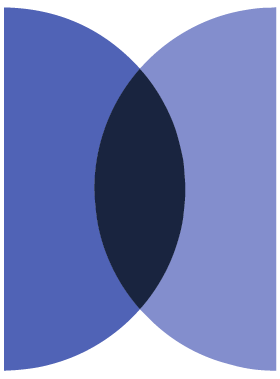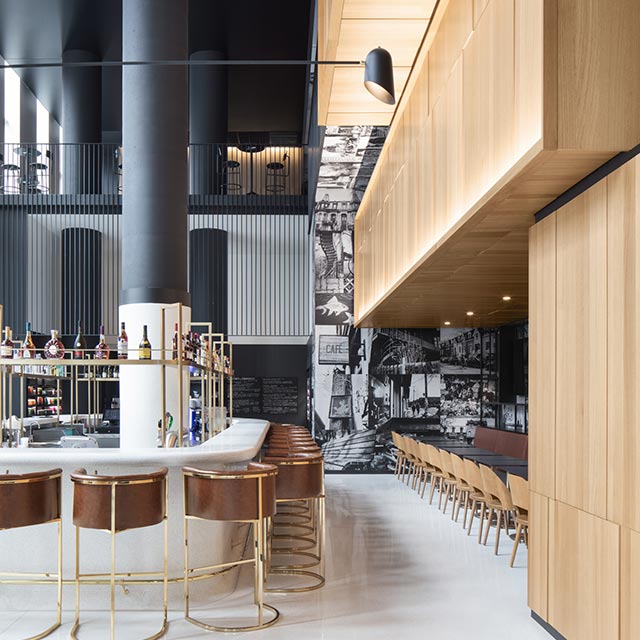En effet, la satisfaction est représentée par une expérience réussie, une image et des croyances positives développées chez les clients fidèles. Néanmoins, satisfait ne veut pas dire fidèle. Un voyageur satisfait n’est pas toujours 100% fidèle et à l’inverse, un voyageur fidèle est avant tout satisfait de son expérience.
De plus, il est prouvé qu’il est 7 fois moins cher de fidéliser un client que d’en acquérir un nouveau car celui-ci est très attaché à la marque en question. Alors pourquoi ne pas saisir cette opportunité et transformer vos clients fidèles en véritables ambassadeurs de marque? Ces ambassadeurs représentent un réel avantage pour vous puisqu’ils vous feront 100% confiance et n’hésiteront pas à vous recommander à leur entourage, ce qui créera un effet de bouche à oreille. Ils seront également plus favorables à acheter vos services et ne seront pas tentés par les offres de vos concurrents. Aussi, vos clients fidèles seront plus compréhensifs en cas de problèmes techniques et ils seront également plus aptes à vous faire part de commentaires rétroactifs et de pistes d’amélioration.
Vous l’aurez compris, vos clients fidèles représentent d’excellentes opportunités pour votre établissement hôtelier mais savez-vous qu’il est possible de mesurer leur fidélité?

Le Net Promoter Score (NPS)
Le NPS est un indicateur incontournable si vous souhaitez mesurer la fidélité de vos clients. À l’aide d’un questionnaire de satisfaction client, vous devez poser la question suivante : De 0 à 10, quelle est la probabilité que vous recommandiez ce produit ou ce service à un ami ou un proche? Ainsi, vous serez en mesure de classer vos clients dans différentes catégories, soit les promoteurs, les passifs et les détracteurs.
La catégorie des promoteurs regroupe les personnes ayant répondu 9 ou 10 à la question précédente. Elle représente vos clients les plus fidèles et satisfaits de leur séjour et donc les personnes les plus susceptibles de réserver de futurs séjours au sein de votre établissement. De plus, les promoteurs recommanderont votre établissement hôtelier à leur entourage et joueront le rôle d’ambassadeurs de marque auprès de futurs prospects. Il est donc important de leur offrir un service irréprochable et une expérience client VIP afin qu’ils se sentent privilégiés et qu’ils continuent de parler de vous de façon positive.
Par la suite, nous avons la catégorie des passifs désignant les clients ayant répondu 7 ou 8 à la question de votre sondage de satisfaction. Ce sont des clients satisfaits de leur séjour mais pas assez satisfaits pour séjourner régulièrement au sein de votre établissement et pour le recommander à leur entourage. Les voyageurs passifs seront également susceptibles d’acheter les offres proposées par vos concurrents si elles sont perçues comme étant plus avantageuses. Il est impératif de ne pas les perdre de vue car il suffirait d’une petite touche de personnalisation pour créer un effet “wow” et donc de vous différencier de vos concurrents.
La dernière catégorie concerne les détracteurs, ce sont les personnes ayant donné une note entre 0 et 6 suite à une mauvaise expérience durant leur séjour. Par conséquent, près de 35% de ces personnes insatisfaites seraient prêtes à publier des avis négatifs sur votre établissement hôtelier et donc à nuire à votre e-reputation. Suite à cela, vous devez réagir rapidement et être proactif si vous souhaitez les transformer en promoteurs. Il est important que vous les sondiez et que vous les écoutiez attentivement afin de savoir ce qui ne s’est pas bien passez lors de leur séjour et afin de trouver des solutions rapidement. Pour calculer votre NPS il suffit de prendre le pourcentage de promoteurs et d’y soustraire le pourcentage de détracteurs. En général, un NPS est considéré comme excellent s’il est supérieur à 50%.
NPS (%): Promoteurs (%) – Détracteurs (%)
Le taux d’acquisition de la clientèle
Le taux d’acquisition de la clientèle sert à déterminer si une stratégie marketing ou une stratégie commerciale est efficace, soit, qu’elle génère un grand nombre de prospects. Ainsi, cet indicateur se calcule grâce à l’ensemble des dépenses engagées pour la promotion et le marketing sur une période donnée divisé par le nombre total de nouveaux clients acquis sur cette même période. Afin d’améliorer votre taux d’acquisition client, nous vous conseillons de privilégier les actions marketing à faible coût comme par exemple les campagnes d’infolettres ou encore l’optimisation SEO.
Taux d’acquisition de la clientèle: Dépenses liées à la promotion et au marketing / Nombre total de nouveaux clients
Le taux d’attrition de la clientèle
À l’inverse du taux d’acquisition client, le taux d’attrition client permet de connaître la proportion de clients perdus sur une période donnée. On peut considérer un client comme étant perdu si il est inactif et si il n’a pas effectué d’achat depuis 1 ou 2 ans.
Afin de déterminer le taux d’attrition client, il faut prendre le nombre de clients perdus divisé par le nombre total de clients et multiplier le tout par 100.
Taux d’attrition de la clientèle: (Nombre de clients perdus / Nombre total de clients) x100
Le taux de réachat
Cet indicateur est intéressant si vous souhaitez avoir un aperçu des clients en cours de fidélisation. Il sert également à mesurer l’impact d’une campagne marketing. Il suffit donc de prendre le nombre de clients ayant au moins réalisé un nouvel achat, divisé par le total de clients et multiplier le tout par 100.
Taux de réachat: (Nombre de clients ayant au moins réalisé un nouvel achat / Nombre total de clients) x100
Le taux de rétention ou taux de fidélité
Le taux de rétention autrement appelé taux de fidélité permet d’évaluer le nombre de clients retenus avec succès au cours d’une période donnée. Il suffit de le calculer de la façon suivante : (100 – taux d’attrition de la clientèle) x100.
Si vous souhaitez améliorer votre taux de fidélité, il est important d’être proactif et de vous concentrer sur des techniques de retargeting, de toujours garder contact avec vos clients et de les solliciter régulièrement à l’aide de messages ciblés et personnalisés.
Taux de rétention ou Taux de fidélité: (100 – taux d’attrition de la clientèle) x100
Les activités du secteur hôtelier sont très irrégulières et saisonnières, ainsi la fidélisation client peut alors devenir un véritable défi pour les hôteliers. De ce fait, si vous voulez réussir à fidéliser votre clientèle, vous devez prouver la réelle valeur ajoutée de votre établissement hôtelier. Plusieurs stratégies peuvent être mises en place comme l’utilisation des données clients récoltées par votre PMS, la mise en place d’un programme de fidélisation personnalisé, des actions de retargeting, un service à la clientèle compétent, disponible et à l’écoute de vos clients ainsi qu’une expérience client hors pair.
La fidélisation des clients à votre marque sur vos propres canaux de communication vous permet aussi d’augmenter votre nombre de réservations directes, évitant ainsi que les intermédiaires tel que les OTAs, gardent une commission sur les ventes réalisées. De plus, n’oubliez pas qu’il est important de garder le contact avec vos clients, que ce soit grâce au marketing par courriel, à votre blog ou encore à vos réseaux sociaux. En effet, les réseaux sociaux sont d’excellents outils gratuits à utiliser et facilement accessibles. Il serait alors pertinent pour vous d’établir une stratégie de contenu ciblée qui vous aidera à susciter de l’engagement et à créer un sentiment d’attachement chez vos clients, à construire une image de marque personnalisée et à mettre en avant la valeur ajoutée de votre établissement hôtelier.
 Log in
Log in












